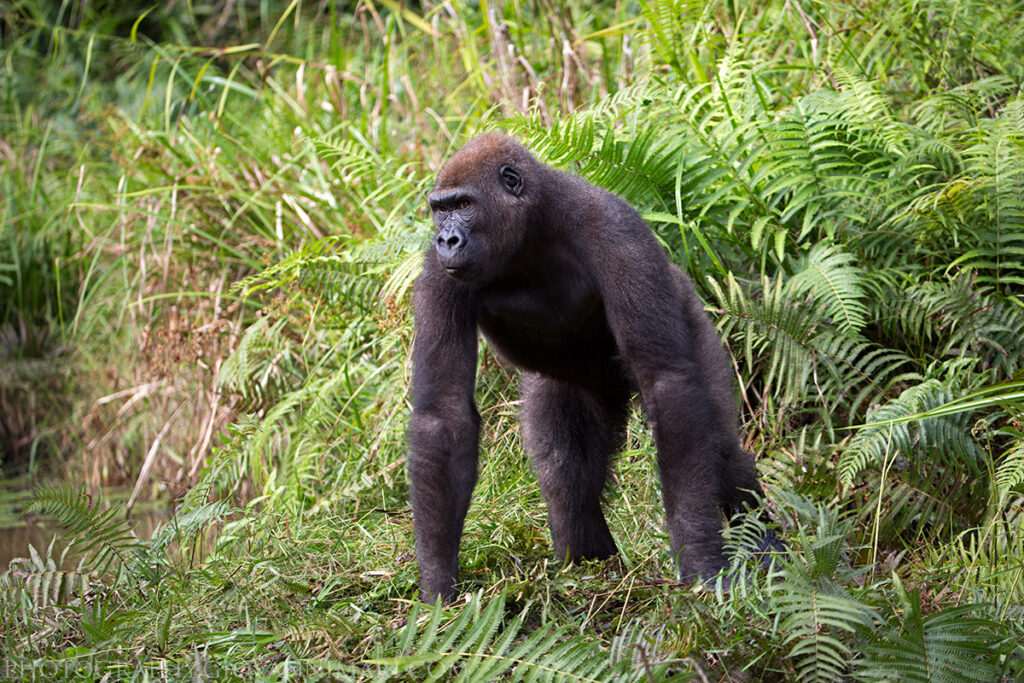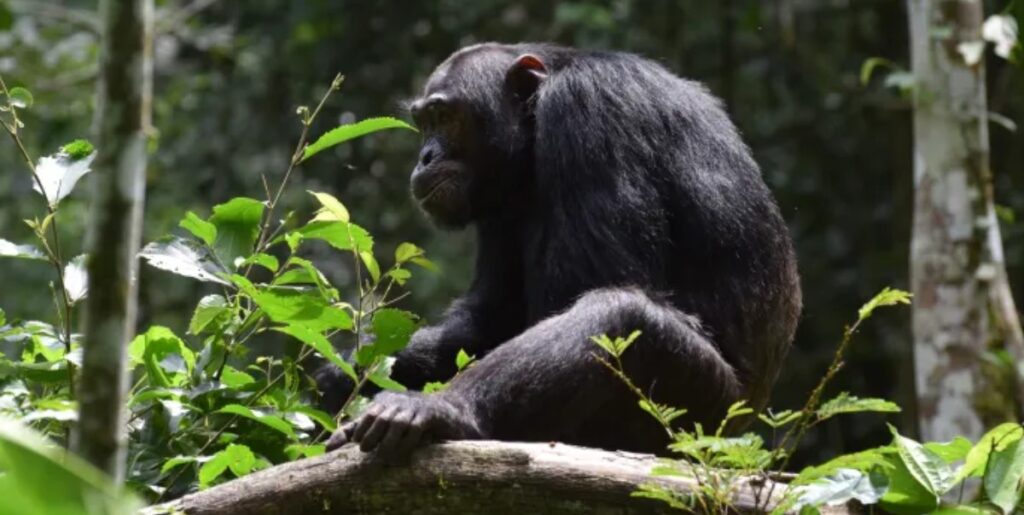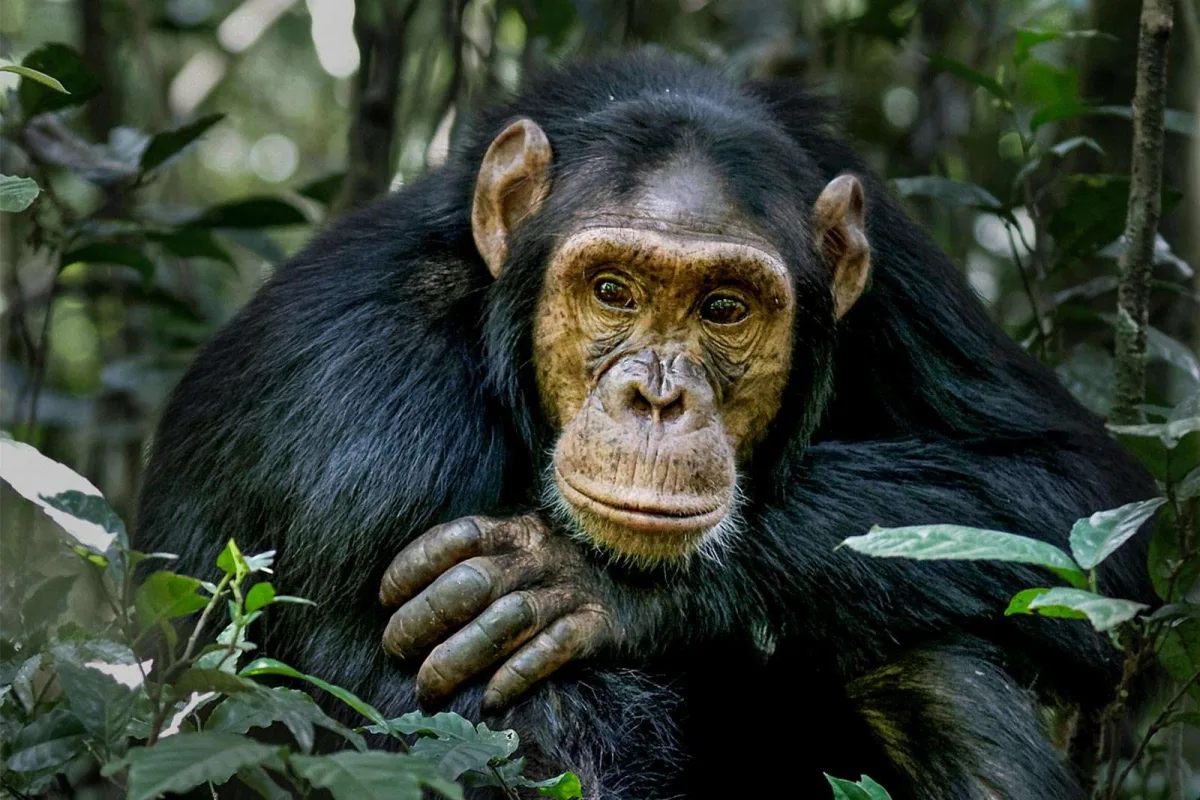Best places to see primates in Tanzania
Best places to see primates in Tanzania, Various primate species, including chimpanzees, vervet monkeys, red-tailed monkeys, blue monkeys, baboons, and red colobus monkeys, inhabit the National Parks of Tanzania. Chimpanzee trekking in Tanzania is a prevalent activity conducted in two primary safari destinations: Gombe Stream National Park and Mahale National Park. This article examines the premier locations for observing primates in Tanzania.

Mahale National Park
Mahale National Park, situated in the Mahale Mountains, is the site for chimpanzee trekking, a notable endangered species in the country. Chimpanzee trekking is an exceptional and remarkable experience for tourists visiting Mahale National Park, guided by an expert over uncharted pathways in the jungle. Trekking navigates dense, obscured woodlands, occasionally necessitating the guide to clear the underbrush to reach the precise location of the chimps.
Mahale National Park hosts around 1,000 chimpanzees, with a select handful being habituated and accessible for tracking, specifically among the Mimikire Clan, also referred to as the M-group. Trekking to locate the M-group of chimpanzees may require several minutes to hours, contingent upon their location. Once located, tourists are permitted to observe the primates for one hour, during which they can study their behaviors, engage in social interactions, groom their offspring, traverse the trees, and exhibit protective behaviors against threats. Tourists must comply with the one-hour regulation; after this period, guides will assist you back to the trailhead.
The chimpanzees in the M-group are accustomed to human presence; while physical contact or interaction is prohibited, they may engage with you by occasionally brushing against you or sitting near your feet as you observe them. Be advised that while chimpanzees are present in Mahale, their sighting during your chimpanzee safari is not assured.
Mahale provides two daily sessions of chimpanzee trekking, ensuring travelers have ample quality time with the primates. Be advised that monitoring chimpanzees requires considerable fortitude, since it may involve prolonged periods navigating through humid environments and occasionally steep slopes. They inhabit the lowlands, and it is essential to understand that chimpanzees are in constant motion throughout the day.

Accessing Mahale National Park:
Mahale is situated in a secluded region, rendering vehicular access challenging. The optimal method of reaching Mahale National Park is via pre-arranged charter aircraft, followed by a boat crossing of Lake Tanganyika to access the national park. Depending on the weather conditions and your financial constraints, you may opt for a traditional wooden boat or a speedboat, which may traverse the distance in approximately 20 minutes to nearly 2 hours.
The optimal period for chimpanzee trekking in Mahale National Park is from July to October, coinciding with the dry season. Chimpanzees are observable throughout the year; however, traversing the dense jungle is more manageable during the dry season when the trekking paths are less muddy and treacherous. This national park is among the least frequented in Tanzania, rendering it an ideal option for those who like to avoid large crowds.
From June to July, the rainfall diminishes, chimpanzees ascend, and trekking becomes arduous.
From July to October, chimpanzee trekking is facilitated as they begin to descend the slopes during this timeframe.
From November to March, the region experiences significant rainfall, characterized by hot and humid conditions, prompting chimpanzees to ascend higher up the slopes, so complicating trekking efforts.
Trekking is suspended from April to May.
Accommodation options:
Accommodation in Mahale is exceptional, and due to the limited number of tourists, all visitors enjoy privacy. You have numerous options available, including Greystoke Mahale, Mbali Mbali Mahale Lodge, Mahale Guest House, and Mahale Classic Lodge, among others.
Regulations and Guidelines for Mahale Chimpanzees
Rules and regulations must be adhered to during trekking to save chimpanzees and their natural habitat. The following are the laws and restrictions that travellers must adhere to:
- Destruction of the national park is prohibited; all waste must be collected and removed from the premises.
- Smoking is forbidden in Mahale National Park.
- Pets are prohibited in the national park.
- Tourists must remain on designated trekking paths at all times during the tracking activity.
- Firearms are prohibited in the park.
- Refrain from damaging trees, branches, and avoid uprooting any vegetation within the park.
- The licenses are valid for only 24 hours, necessitating the purchase of an additional permit for subsequent admission to the national park.
- The National Park operates from 6:00 am to 6:00 pm, which is the designated timeframe for trekking activities.
- When in the presence of chimpanzees, the following rules and regulations must be adhered to:
- All tourists are allotted a maximum of one hour with the chimpanzees.
- A maximum of six individuals in a group are permitted to monitor the chimpanzees throughout each session every day.
- All tourists must maintain a distance of 10 meters from the chimpanzees at all times.
- Consumption of food and beverages in the presence of chimpanzees has been outlawed.
- Consumption must occur at a minimum distance of 250 meters from the chimpanzees.
- When the urge to use the toilet arises, distance yourself from the chimpanzees by at least 250
- meters and excavate a hole that must be adequately concealed thereafter.
- The minimum age requirement for tracking chimpanzees in Mahale is 12 years or older.
- Avoid sneezing and coughing in proximity to the chimpanzees.
- Deactivate the camera when photographing the chimpanzees.
- All hikers exhibiting illness will be prohibited from tracking the Mahale chimpanzees.
- Abandon all personal possessions on the ground, positioned at a safe distance from the chimps.
Gombe Stream National Park: Chimpanzee Expedition
Gombe National Park is among the least frequented national parks in Tanzania and is one of just two locations in the country for chimpanzee trekking safaris. Situated on the banks of Lake Tanganyika, Gombe hosts a diverse array of primate species inhabiting the Miombo woodlands and forests. The national park increased in prominence in 1960 when Dr. Jane Goodall, an environmentalist, established her headquarters there to research and protect chimpanzees. Her research resulted in the preservation and habituation of numerous chimpanzees, facilitating the establishment of chimpanzee trekking activities in their natural environment.
Gombe National Park is home to various primate species, including chimpanzees, red-tailed monkeys, olive baboons, red colobus monkeys, and diadem monkeys, among others. It also hosts several wildlife species, including bushbucks, leopards, barbets, vultures, and buffaloes, among others.
Chimpanzee trekking is the primary activity in Gombe, involving the tracking of chimpanzees under the guidance of experts along designated paths. Once identified, guests are permitted to spend a minimum of one hour with the animals. The trekking adventure commences at 7:00 am with a briefing regarding the rules and regulations to be adhered to by the guides. Following the briefing, trekkers will be divided into groups of six, after which the hiking will commence. Monitoring chimpanzees in Gombe may last for several hours, contingent upon their location, and once located, each group engages with the primates for one hour. While hiking for chimpanzees, you will also get the opportunity to observe various other primate species, including red-tailed monkeys, blue monkeys, and vervet monkeys, among others.

Regulations and guidelines of Gombe
Chimpanzees are a primate species that require constant protection, and the following are the regulations that trekkers must adhere to before, during, and while in the presence of the monkeys.
The minimum age requirement for trekking is 15 years.
Littering within the national park is forbidden.
Depart from the national park as you discovered it, ensuring no disruption occurs.
Adhere to all directives from the rangers and guides.
Maintain a distance of 7 meters between yourself and the chimpanzees.
Remit all fees pertaining to the chimpanzees
Feeding, smoking, and physical contact with the chimpanzees is prohibited.
Deactivate your flash when photographing the chimpanzees.
Best time to visit Gombe national Park For chimpanzee trekking
The optimal period for chimpanzee tracking in Gombe National Park is the dry season, specifically from late May to around October, and from December to February. Chimpanzee trekking in Gombe is feasible year-round, including the rainy season; however, it becomes more challenging due to muddy and slippery paths resulting from the precipitation at this time.
Accessing Gombe:
The optimal method to reach Gombe National Park is via charter flights from Mwanza, Dar es Salaam, or Arusha, contingent upon your entry point to Kigoma airport, from which you would then proceed to the Park via ferry across Lake Tanganyika.
Accommodations:
Tourists on a primate safari to Gombe National Park have access to many accommodation options, including budget, mid-range, and luxury facilities. The facilities in Gombe are Mukoyoyo Guest House, Mbali Mbali Gombe Lodge, Muzye Lodge, and Gombe Forest Lodge, among others. Consult your tour operator regarding the most suitable hotel options within your budget, and this should be arranged in advance.
Checklist for Primate Tracking in Tanzania
Packing adequately for a monkey safari in Tanzania is essential for an optimal experience, as it enables you to monitor chimpanzees while ensuring your comfort and access to necessary provisions. The optimal packing list for primate safaris in Tanzania should encompass the following items:
- Lightweight trousers in muted hues. The length aids in preventing scratches and insect bites on your tree.
At least two pairs of neutral-colored long-sleeved shirts. - Knee-length waterproof hiking boots
- Insect deterrent
- Solar protection lotion
- Cozy pullover
- Water-resistant jacket
- clothing
- Water-resistant backpack
- Bottled potable water and refreshments
- A photographic device
- Optical instruments for magnifying distant objects
The expense associated with primate trekking in Tanzania
The expense of primate trekking in Tanzania is influenced by various factors, including permit fees, duration of the safari, selected accommodation (budget, mid-range, or luxury), travel season (dry season as peak and rainy season as low), additional safari activities included in the itinerary, among others. The permit fee in Tanzania varies based on the selected safari destination.
To visit the two chimpanzee trekking locations in Tanzania, guests must get chimpanzee trekking permits, with costs varying by site. Trekking permits must be acquired in advance due to elevated demand during the dry season, ideally 3 to 6 months prior to the hike date.
Gombe National Park
Adults and children
- Non-resident foreigners USD 100 USD 20
- Non-resident aliens USD 50 USD 10
- Citizens of East Africa TZS 10,000 TZS 2,000
- Children under the age of 5 years have complimentary admission to the national park; however, they are prohibited from trekking the chimpanzees.
Mahale National Park
Non-resident foreigners USD 150
Best period for primate safaris in Tanzania
Tanzania experiences two travel seasons: the dry season and the wet season. Chimpanzees can be monitored during all seasons. The optimal period is the dry season, from June to October, as chimpanzees are more visible, and the pathways are more accessible due to reduced moisture and less dense vegetation compared to the wet season. Experienced guides and trackers facilitate the spotting of chimpanzees. Although the rainy season is suboptimal, it enhances visibility as the chimpanzees congregate and exhibit reduced mobility due to the plentiful food supply during this period.
